- Log in
-
- Sydney Overseas Office
- London Overseas Office
- Toronto Overseas Office
- Los Angeles Overseas Office
- New York Overseas Office
- Ulaanbaatar Overseas Office
- Istanbul Overseas Office
- Dubai Overseas Office
- New Delhi Overseas Office
- Manila Overseas Office
- Jakarta Overseas Office
- Hanoi Overseas Office
- Kuala Lumpur Overseas Office
- Singapore Overseas Office
- Bangkok Overseas Office
- Map
- Sydney Overseas Office
- London Overseas Office
- Toronto Overseas Office
- Los Angeles Overseas Office
- New York Overseas Office
- Ulaanbaatar Overseas Office
- Istanbul Overseas Office
- Dubai Overseas Office
- New Delhi Overseas Office
- Manila Overseas Office
- Jakarta Overseas Office
- Hanoi Overseas Office
- Kuala Lumpur Overseas Office
- Singapore Overseas Office
- Bangkok Overseas Office
Medical Service
-
-
-
ENT Hospitals in Korea, a New Standard in Ear, Nose, and Throat (ENT) Health
-
02/28/2025
-
724
0
0
-
-
Korea_Medical_Tourism
ENT_(Ear_Nose_Throat)
Useful_Information
-
-
-
ENT Hospitals in Korea, a New Standard in Ear, Nose, and Throat (ENT) Health
Many people from several countries, including the U.S., China, Mongolia, Kazakhstan, and Russia, have recently visited ENT hospitals in Korea to get septoplasty, chronic sinusitis treatments, phonosurgery, etc. They are said to visit ENT hospitals in Korea due to their expertise and medical technology precision. Let’s explore the features of ENT hospitals in Korea, trusted and visited by many.
1. Strengths of ENT Hospitals in Korea
POINT 1. Skilled Medical Techniques and Patient-Focused Treatments
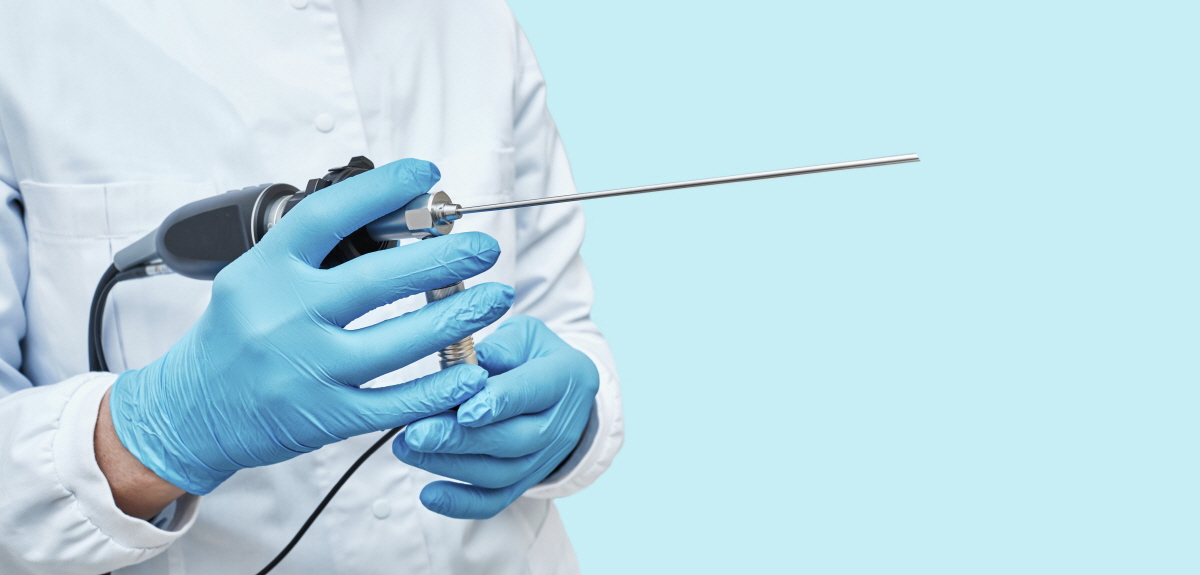
ⓒClipartKorea
ENT hospitals in Korea boast world-class medical technology. Minimally invasive endoscopic surgery is the representative treatment demonstrating the precise manual dexterity Korean doctors have. The merit of endoscopic surgery is that it minimizes bleeding and tissue damage, thereby reducing post-surgical pain and enabling rapid recovery without scarring.
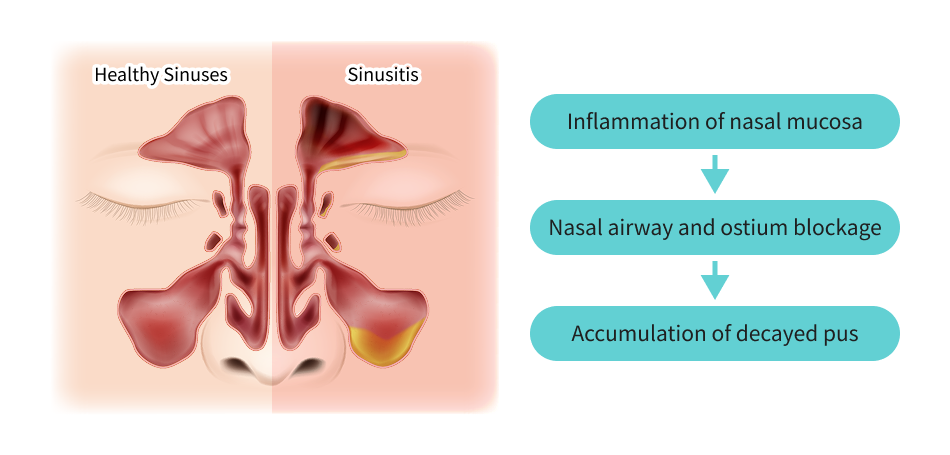
Chronic sinusitis is also treated using an endoscope. This endoscopic surgery for chronic sinusitis removes inflammation and pus from the paranasal sinuses while visualizing the inside of the nose using an endoscope. This surgery, which takes approximately 30 minutes, does not require an external incision as previously mentioned. So patients are highly satisfied as there are no concerns about scarring.

ⓒClipartKorea
ENT hospitals in Korea have differentiated technological power in treating voice-related diseases as well. For voice-related diseases that cannot be thoroughly treated through voice therapy, phonosurgery is performed. This customized treatment uses a 3D-based voice analysis technology, which helps analyze the voice features and vocalization habits of individual patients. During surgery, laser technology is leveraged to preserve the vocal cords as much as possible without damaging the healthy surrounding tissues. Such precise medical technology found at ENT hospitals in Korea has gained a particularly high level of trust among vocal professionals such as classical vocalists, teachers, and announcers.
In summary, ENT hospitals in Korea precisely address the needs of individual patients by leveraging state-of-the-art medical techniques. They transform the lives of their patients, rather than simply treating diseases. This is the power of ENT hospitals in Korea.POINT 2. Highly Accessible Infrastructure and Reasonable Costs

Even though Korea is a medically advanced country, medical treatment costs are very low. For instance, the average cost of rhinitis surgery in Korea is approximately 40% lower than that of the U.S. Septoplasty in Korea, which is frequently sought after by foreign patients, is only one-third of the average cost in the U.S. (approx. 10,000 dollars). Even when compared to other medically advanced countries, such as Japan or Singapore, the treatment cost in Korea is about three times lower. Furthermore, Korea boasts great medical accessibility. There are approximately 800 hospitals just in Seoul (the capital) alone. Notably, approximately 70 of the hospitals are found in the Gangnam-gu area. Another merit of ENT hospitals in Korea is the short waiting time, allowing patients to receive doctor consultations quickly.
Source 1) 2023 Report on the Statistical Analysis of Foreign Patients Attracted, the Korea Health Industry Development Institute Source 2) Overview of Hospitals, Clinics, and Pharmacies in Korea (October 2024), Health Insurance Review & Assessment ServicePOINT 3. ENT Nasal Surgery Achieves Both Functionality and Beauty
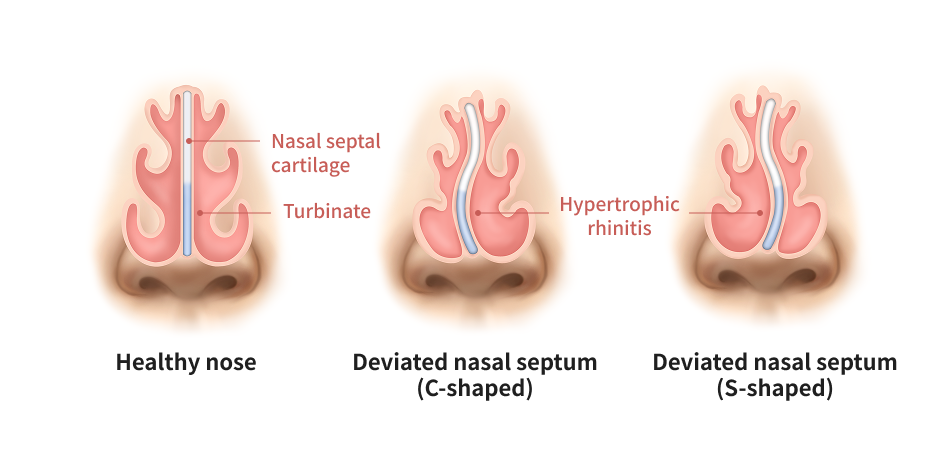
One of the most sought-after surgeries among foreign patients at ENT hospitals in Korea is septoplasty. This surgery, which treats rhinitis to restore nasal function, has gained popularity as cosmetic surgery can also be performed at the same time. Deviated nasal septum is a condition where the thin wall (nasal septum) between the nasal passage is displaced to one side. The deviated nasal septum can form a C-shape or S-shape, or the upper or lower part of the nasal septum can become thick, resulting in a crooked or humped nose.
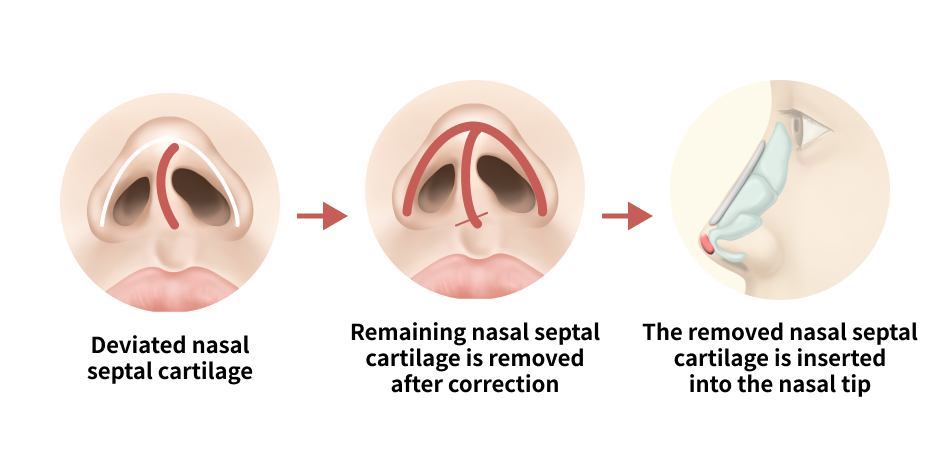
During septoplasty, rhinoplasty can be performed as well to lift the nasal tip using the nasal septal cartilage that is removed during the correction of deviated bones or thick nasal bones. As the surgery is performed by an ENT specialist, the nasal structure is reinforced from the inside before rhinoplasty, resulting in a solid and more beautifully shaped nose. In response to patients’ needs to achieve both functionality and beauty, Korea’s ENT doctors perform customized surgeries by carefully considering facial proportions and harmony, delivering highly satisfactory surgical outcomes. However, above all, it is important to have sufficient consultations with your doctor on your nasal conditions before deciding on any surgery.
2. Tips for Choosing ENT Hospitals in Korea

Chee-yeul Park, Director of Special Rhinoplasty Center

Jae-kook Oh, Director of Boaz ENT (Otorhinolaryngology) Clinic

Han-sung Kim, Director of Boaz ENT (Otorhinolaryngology) Clinic
* (In the order of the photo) This content was written based on interviews with Chee-yeul Park, Director of Special Rhinoplasty Center; Jae-kook Oh, Director of Boaz ENT (Otorhinolaryngology) Clinic; and Han-sung Kim, Director of Boaz ENT (Otorhinolaryngology) Clinic.
- Finding an ENT specialist
- Finding a hospital specialized in treating my condition
ENT treatment is directly related to patients’ breathing. How can we choose a reliable ENT hospital? First, visit an ENT specialist. ENT specialists have expertise in ear, nose, and throat-related diseases. General practitioners and ENT specialists have different levels of expertise. Please check the hospital’s website to see if ‘ENT specialists’ are listed in the medical staff introductions. Second, search for hospitals specialized in treating your particular symptoms. Look for hospitals specialized in certain areas related to the ears, nose, and throat. Checking the hospital’s website for its primary area of focus is also recommended. If you are looking to treat hearing impairments or other ear-related treatments, you can check member hospitals on the Korean Otological Society website.
Columnist Profile : Medicine Channel After the Rain, Hee-seon Choi, PD
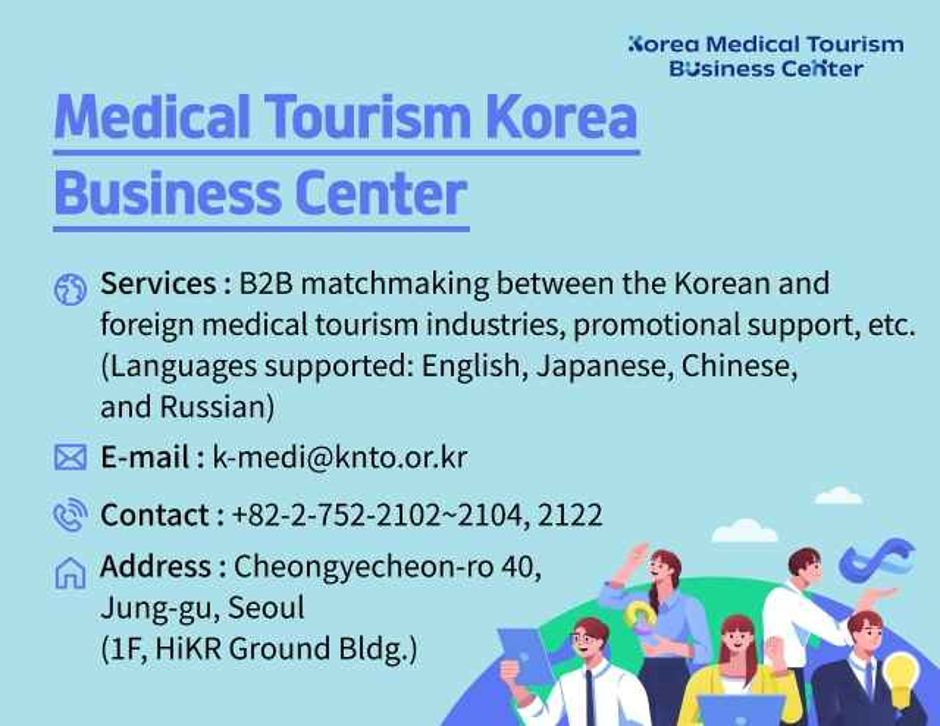

- 1330 Korea Travel Helpline: +82-2-1330
- 1330 Text Chat: https://m.site.naver.com/1rEid
- (Korean, English, Japanese, Chinese, Russian, Vietnamese, Thai, Indonesian)
- * This column was last updated in December 2024, and therefore information may differ from what is presented here.
-







 Medical korea
Medical korea